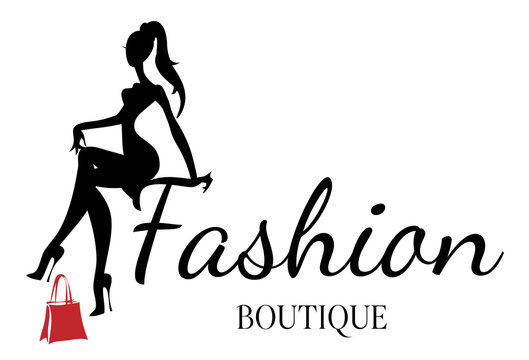Checking out the World of Lasting Boutique Fashion Brands
Checking out the World of Lasting Boutique Fashion Brands
Blog Article
Exploring the Development and Influence of Clothing on Modern Fashion Trends
The development of apparel has actually considerably affected modern fashion fads, merging historical criteria with cutting-edge innovations. Famous figures like Coco Chanel and Yves Saint Laurent reinvented the style market by introducing principles that focus on convenience and availability, which proceed to resonate today.
Historical Fashion Influencers
In the tapestry of style background, certain figures have left an indelible mark, forming the patterns and designs that define entire ages. Coco Chanel, an advanced developer, redefined females's style by presenting comfy, sophisticated clothes that left from limiting bodices. Her legendary Chanel match and little black dress have actually ended up being timeless staples in closets worldwide. Christian Dior's post-war "New Look" in 1947, with its event of womanhood through complete skirts and cinched waistlines, marked a return to opulence and has proceeded to influence developers.
Elsa Schiaparelli is one more pivotal number, renowned for her avant-garde designs that incorporated surrealist art, working together with Salvador Dalí to create whimsical pieces that tested standard looks. Her innovative use shade and bold patterns resounds in modern fashion. Yves Saint Laurent, meanwhile, democratized haute couture with prêt-à-porter collections, bringing runway designs to the masses and setting a precedent for modern-day ready-to-wear lines.
These visionaries, to name a few, not just transformed fashion in their times however likewise set withstanding patterns that resonate in today's garment industry, providing a foundation whereupon contemporary designers remain to develop and introduce. Their heritages underscore the relevance of imagination and daring in vogue's ever-evolving narrative.
Technical Innovations in Fashion
Among the vibrant landscape of the garment industry, technical advancements stand at the leading edge of innovation, reshaping how designers create and consumers engage with fashion. The combination of 3D printing has transformed design processes, enabling designers to trying out complex structures and lasting materials that were previously inconceivable. This technology promotes quick prototyping, minimizing waste and accelerating production times.

Smart textiles, installing innovation into textiles, are likewise changing the market. Technologies like temperature-regulating and self-cleaning textiles offer enhanced performance and comfort. Wearable innovation, integrating attributes like physical fitness tracking and interaction, includes a brand-new dimension to style, merging visual appeals with functionality.
Cultural Shifts and Design
As technical developments continue to reshape the apparel industry, cultural changes are similarly significant, redefining design and consumer preferences. In current years, the surge of social media sites systems has sped up the dissemination of international fashion trends, permitting diverse cultural impacts to merge and exist side-by-side. This electronic interconnectivity has assisted in the rapid exchange of ideas, bring about a more eclectic and inclusive interpretation of style that mirrors the complex nature of modern society.
Cultural awareness and gratitude have prompted designers to attract ideas from a wider range of ethnic and historic contexts, incorporating standard motifs with contemporary looks. This blend has caused style that reverberates with a bigger target market, advertising a feeling of identification and belonging throughout different demographics. Additionally, the enhancing need for customization has actually driven brands to supply adjustable options, making it possible for customers to express uniqueness while showing their social heritage.
In addition, shifting societal worths have actually affected fashion, with inclusivity and variety becoming central styles. The industry has actually begun to accept designs and influencers of numerous body kinds, ethnic cultures, and sex identities, challenging conventional charm requirements. This change highlights the power of cultural shifts fit the future of fashion, as style ends up being a more authentic expression of cumulative and individual identification.
Sustainability and Modern Design
While the fashion market proceeds to advance, the vital for sustainability has actually ended up being progressively immediate, affecting modern style practices. The surge of slow YOURURL.com style, which emphasizes high quality over amount, urges customers to spend in classic pieces rather than short-term trends.
In addition, modern-day layout is identified by its advancement in decreasing waste and promoting circularity. This approach not just mitigates environmental impact but also improves the social duty of style homes.

Future Trends in Fashion

Sustainability will remain to be a driving pressure in shaping future style trends. The market is increasingly taking on environment-friendly products and moral manufacturing techniques, replying to a growing consumer need for accountable techniques. Technologies such as bio-fabricated materials and closed-loop recycling systems are established to redefine just how clothing is generated and consumed, decreasing environmental influence while keeping style and quality.
Social shifts, including the increase of inclusivity and variety, will certainly additionally play a pivotal function. As culture comes to be a lot more knowledgeable about social issues, fashion is expected to end up being a platform for expression and modification. Designers will likely focus on creating collections that show a wider variety of experiences and identifications, championing depiction and availability.
Conclusion
The development of clothes considerably affects modern fashion trends, where historical impacts merge with modern layouts. Trick figures like Coco Chanel and Yves Saint Laurent have actually redefined style, while technical developments such as 3D printing and wise fabrics increase innovative possibilities. Cultural shifts towards inclusivity and sustainability oblige brand names to adopt moral practices and embrace variety. This ongoing evolution highlights style's role as a mirror to societal values and technological advancement, suggesting a future abundant with development and inclusivity.
The advancement of clothing has actually dramatically affected modern style fads, combining historical criteria with innovative developments.Among the vibrant landscape of the style sector, technical developments stand at the center of technology, improving exactly how developers develop and customers engage with style.While the fashion market proceeds to advance, the imperative for sustainability has ended up being increasingly immediate, influencing modern-day style techniques. As sustainability becomes ingrained in modern style, it leads the way for a much more learn the facts here now aware and responsible style market.
The development of clothes considerably impacts contemporary style trends, where historical impacts merge with modern layouts.
Report this page